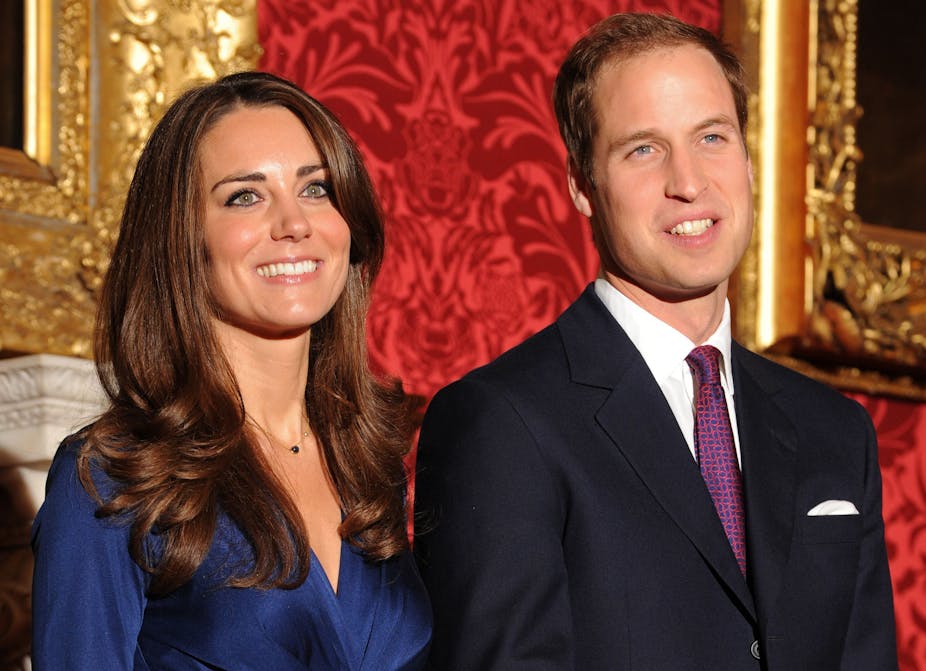The Royal Wedding has failed to capture the imagination of the commoners. Prince William and his bride can only dream of exciting people the way Oprah Winfrey did on her state visit here last year.
It wasn’t always this way. On the evening of June 6 1977 Queen Elizabeth lit a bonfire at Windsor Castle to mark the start of a week of celebrations marking the 25th anniversary of her coronation.
Many miles away, the inhabitants of a small East Gippsland town also ignited a royalist bonfire. I know this because I was there.
Maffra was one of many country Australian towns that loyally marked the silver jubilee. I can’t remember much of the event, although I venture a guess that it was cold standing in a paddock beyond the town boundaries, lit only by the night sky and the flames of the bonfire.
I doubt that Maffra marked the Queen’s Golden Jubilee quite so assiduously. This is nothing to be ashamed of; across the Commonwealth few events in recent decades have matched the royalist fervour of 1977.
The British themselves are struggling to emulate the enthusiasm generated by the silver jubilee. In 1977, millions of British subjects attended street parties to mark the anniversary of the coronation.
A comparison with the tepid uptake of street parties for this week’s royal wedding couldn’t be starker. Like an exasperated captain of a sluggish public school hockey team, the Prime Minister, David Cameron, is urging the British population to show a little more enthusiasm.
The Royals in Australia

In the Australian context, neither event – the silver jubilee nor the pending royal nuptials – can compare with the excitement produced by the Queen’s first Australian tour.
Historians Jane Connors and Ewan Morris have written evocatively of the fervour and passion generated by the Queen and Prince Phillip as they wound their way around the continent during the long late summer tour of 1954. Sundry royal sons had visited Australia – not least Prince Henry, Duke of Gloucester and Governor-General between 1945 and 1947 – but this was the first time a reigning monarch had toured.
Her visit was met with unmitigated approval - even left-wingers jostled to meet the sovereign. Some 7 million Australians claimed to have caught a glimpse of the Queen as she swept past. Notwithstanding the numerous cases of sunburn, Prime Minster Menzies declared the 8 week extravaganza “literally, a tremendous success”.
Tracing the Australian response to these three royal events across six decades might give local republicans heart.
The media is gearing up for the marriage of Prince William and Catherine Middleton in its usual breathless manner, but I think the spectacle lacks a particular emotional quality of the 1954 tour – or for that matter the silver jubilee.
As Ewan Morris has noted, part of the power of the 1954 tour was the purchase Britain, whiteness and the empire held on the majority of Anglo-Australians.
Commentators declared the tour living evidence of Australia’s participation in the “British Way of Life”. The tour reinforced the dominant belief that Australians had “never been anything but British in race, tradition and rule.”
By the time I attended Maffra’s silver jubilee celebrations this commemoration of Britain and the Empire – and Australia’s special place in it – had been radically destabilised.
But like the dying embers of the bonfire there was just enough emotional memory of Queen and country in my family to warrant us trudging out to a country paddock on a brisk June night.
It was tenuous and fading, but the royal family – and certainly Her Majesty – were still part of everyday Anglo-Australian emotional life.
I do not think that emotional connection exists today, certainly not in the same way.
The new royalty

If you want a latter day equivalent of the 1954 royal tour, look not to Prince William’s recent dash to Queensland and Victoria but Oprah Winfrey’s triumphal 2010 tour. The heightened expectations, the omnipresent media, the desperate crush of subjects for proximity to their idol – Oprah Winfrey’s Australia tour was near regal in its munificence and popular reception.
All this point towards a widening (some might say coarsening) of contemporary idealisations and emotional identifications.
In short, the Royals are no longer the only show in town. The rise and rise of celebrity culture offers a huge cast of idols to worship.
Still, the Royals remain a satisfying spectacle to follow, even if they are no longer central to the way Australians imagine themselves.
The more astute Republicans realise this but have struggled to sell the emotional benefits of discarding the royal tie and beginning afresh. Until they do, I suspect the present constitutional arrangements will remain.

